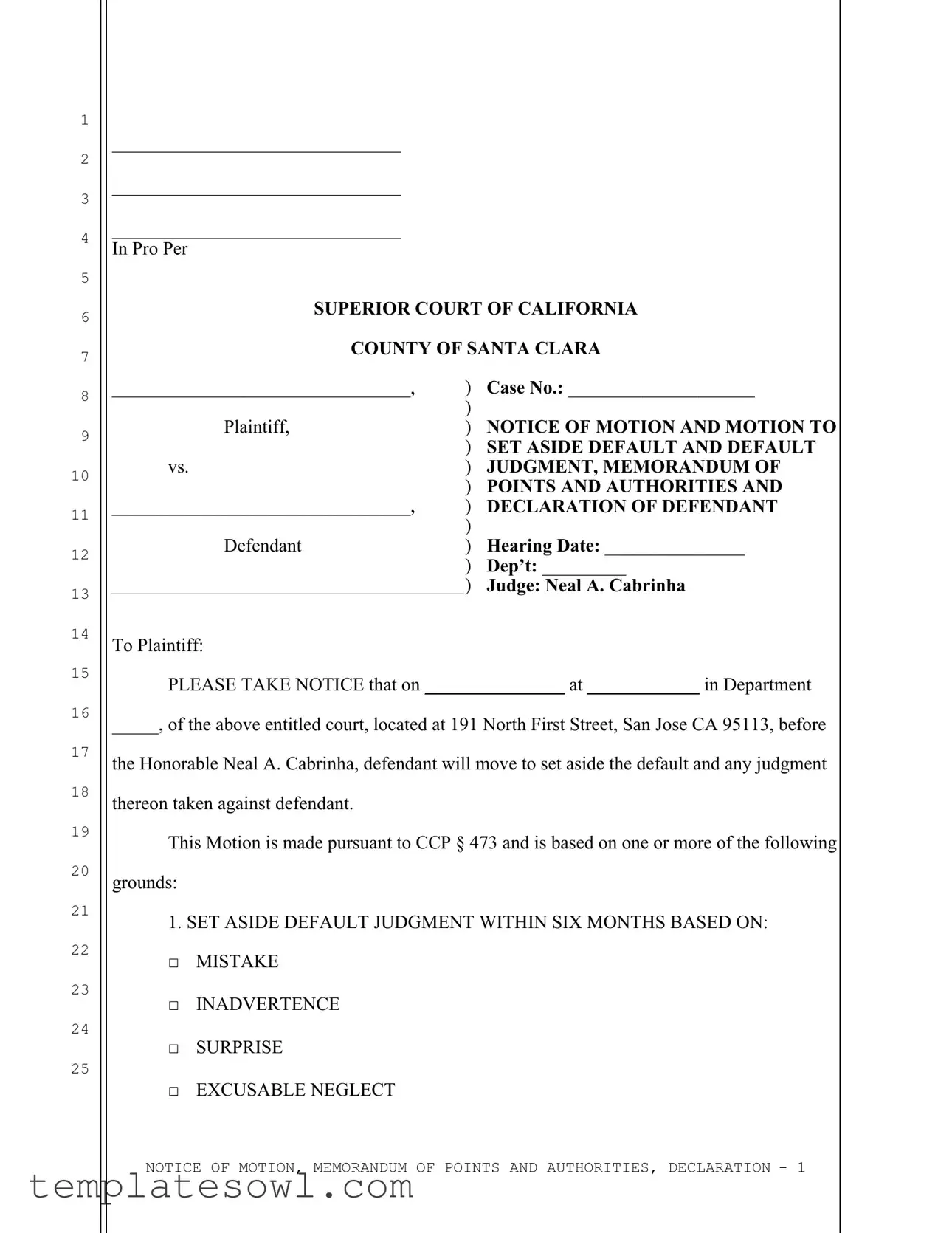What is the California Motion Set Aside form?
The California Motion Set Aside form is a legal document used to request the court to set aside a default judgment or default entered against a defendant in a civil case. This form is especially relevant in situations where a party failed to respond to a complaint due to reasons like mistake, inadvertence, surprise, or excusable neglect. The goal of this motion is to ensure that every case is decided on its merits rather than being dismissed due to technicalities.
Who can file a Motion to Set Aside?
Any defendant who has had a default or default judgment entered against them can file a Motion to Set Aside. The individual must demonstrate valid reasons for not responding in a timely manner, as specified in the California Code of Civil Procedure Section 473. This is typically the defendant themselves, though they may seek assistance from legal representation if needed.
What are the grounds for filing a Motion to Set Aside?
According to California law, the common grounds for filing a Motion to Set Aside include mistake, inadvertence, surprise, or excusable neglect. Each of these grounds means that the defendant had a reasonable explanation for missing the deadline to respond to the complaint. This can encompass misunderstandings related to paperwork, unexpected circumstances, or various other valid reasons.
How long do I have to file this motion?
Defendants must file their Motion to Set Aside within six months of the default judgment being entered. It’s crucial to act quickly, as waiting too long could result in losing the opportunity to have the default judgment overturned. This is intended to ensure that the process remains fair and allows the parties involved to resolve their issues in court.
What documents should accompany the Motion to Set Aside?
When filing a Motion to Set Aside, the defendant must include a copy of the answer or other pleading they intend to file. This provides the court with context regarding the case and what the defendant’s response would have been had they not missed the deadline. Additionally, a detailed declaration explaining the reasons for the delay should be included, giving the court insight into the circumstances behind the missed response.
What happens after the motion is filed?
After filing the Motion to Set Aside, the court will schedule a hearing where both parties can present their arguments. The defendant will explain why the motion should be granted, while the plaintiff may respond. The judge will consider the merits of the case, along with the applicable laws, before making a decision. If the motion is granted, the default judgment is canceled, and the case will proceed as if the defendant had responded in a timely manner.
Can I represent myself in this process?
Yes, individuals can represent themselves in their Motion to Set Aside. This is known as appearing “in pro per.” While it is possible to navigate the legal system without an attorney, it’s often advisable to seek legal advice or assistance, particularly if there are complexities that arise during the process. Understanding the nuances of the law can significantly impact the outcome of your case.



